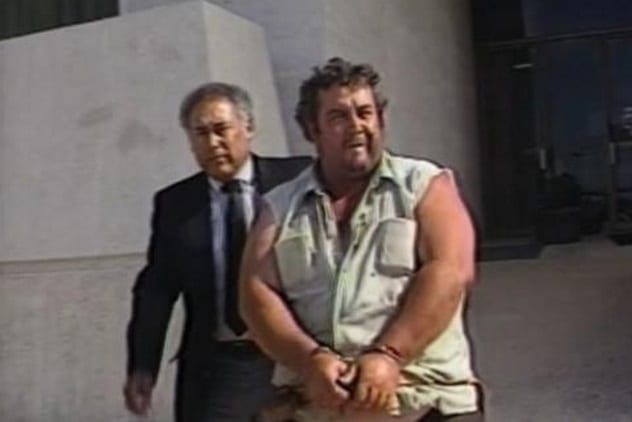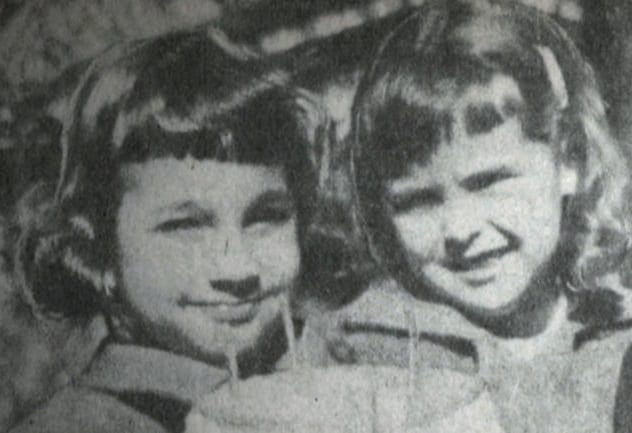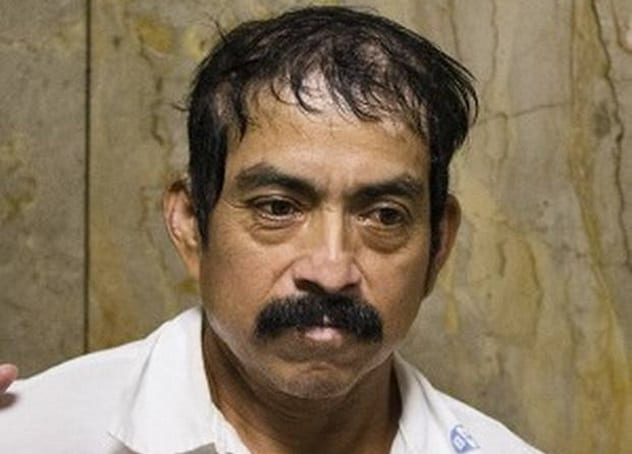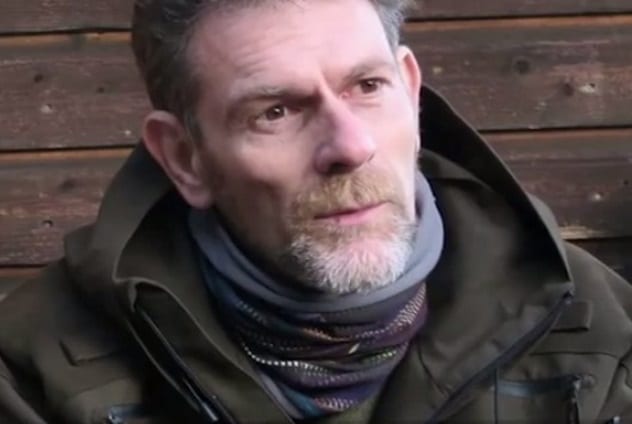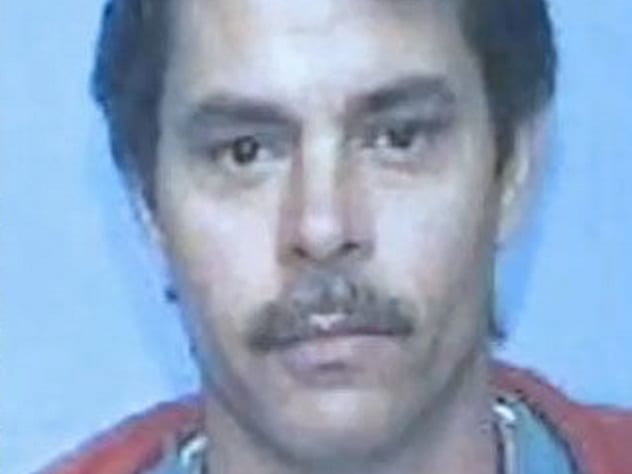But occasionally, thankfully, this isn’t always the end of the story. While it is rare, sometimes new leads, new ideas, and new breakthroughs motivate authorities to exhume the body of someone who had been written off simply as accidental death or an unsolved murder, only for the results of the post-exhumation investigation to bring about a conviction. Here are ten such cases where bodies were exhumed, leading to the solving of a murder case.
10 Virginia Vincent
As we will see, often, by the time a body is exhumed to catch a murderer, it’s one of the most sentimental gestures that a society can do for a grieving family, as the murderers themselves are dead or already behind bars, making prosecution redundant at best, pointless at worst. This is the case with Virginia Vincent, a 57-year-old resident of Danville, California. In 1985, she was brutally raped and strangled, and it wasn’t until 2002 that DNA evidence was able to produce a profile from the DNA collected. The Combined DNA Index System (CODIS) is a system of DNA profiles that the police use to hunt for matches to murders, and the profile found at the Vincent scene was scanned through CODIS, but no match was found. Cut forward to 2017: The Contra Costa County sheriff’s office decided to submit the samples and have them run through the more rigorous California state forensics system, which came up with a possible, but not definite, match to a man named Joey Lynn Ford, who died in 1997.[2] After the possible match was made, it was discovered that Ford had been arrested for a DUI in Danville the day before the murder, and the case was starting to come together. In late 2018, the authorities exhumed the body of Ford, and the DNA tested from the body that was buried in 1997 turned out to be an exact match to that found at the murder scene of Virginia Vincent way back in 1985, and the case was solved.
9 Virginia Freeman
On August 11, 1999, a man named James Otto Erhart was executed. Erhart had kidnapped and murdered a nine-year-old girl by the name of Kandy Kirtland, from Bryan, Texas. Cut back to December 1, 1981, when a woman named Virginia Freeman, who was working as a real estate agent at the time, received a call from a man claiming to be interested in buying a home; the man was none other than James Otto Erhart. Erhart beat and stabbed her repeatedly before finally strangling her to death, leaving her corpse in the still-locked house. The crime scene was thoroughly investigated, and skin samples were taken from underneath the fingernails of Virginia Freeman, but at the time, DNA testing was not an option. Erhart sat on death row and refused to give a DNA sample all the way up until his execution. With no further evidence to go on, the Virginia Freeman case remained cold. Then, in 2018, investigators decided to unearth the body of James Otto Erhart, and a warrant was granted for the exhumation. The bone fragments of Erhart were tested against the skin under the fingernails of Freeman found at the crime scene, and a murder was solved after nearly four decades, thanks to DNA evidence and the exhumation of a cold-blooded killer.[3]
8 Maria Ridulph
Back in 1957, Maria Ridulph (left above) was just a seven-year-old girl. On December 3 of that year, she was out playing with a friend. With plenty of witnesses around, Maria was approached by a man who offered her a piggy-back ride, gave her one, and then returned her safely. Then she left to get some dolls to continue playing and then came back, and that’s when she vanished entirely. A man named Jack Daniel McCullough (also known as John Tessier) would be a suspect, but police lacked the hard evidence to convict him, especially after he passed a polygraph test, some of the best technology of the day. Like so many others, Maria’s case went cold—very cold—and would be touted as the coldest case to be solved in United States history. In 1994, Jack McCullough’s mother made some pretty bizarre statements on her deathbed, which refocused the investigation into Jack. She had apparently lied to give him an alibi. In 2008, the case was reopened. And that friend Maria was out playing with on that fateful day in 1957? She would be called to testify in the case at 62 years old. The body of Maria Ridulph was exhumed in 2011 in hopes of giving the prosecution the evidence needed to make a conviction. In 2012, they achieved their goal, and McCullough was given a life sentence. Justice was served. Or was it? In 2017, a judge dismissed his conviction, and McCullough was declared innocent and set free.[4] Unfortunately, Maria’s case went from solved to unsolved.
7 Judy Sawchuk
In Windsor, Ontario, a woman was beaten to death in her apartment in 1985. While a knife was found in her hand, it was the weapon she must have grabbed in a panic while she made her last stand against her attacker. Police descended upon a blood-soaked scene, where they found the body of Judy Sawchuk, who had died of blunt-force trauma. One year later, in 1986, a man named Gerald Dennis Hillman died of a drug overdose. The police had no connection between Hillman and Sawchuk at the time.[5] Like the others, the Sawchuk case grew cold as no leads emerged. Then, in 2003, a surprise breakthrough came: A man emerged to whom the late Hillman had apparently confessed to the murder of Judy Sawchuk. In 2006, the police decided to unearth Judy’s remains, and through the exhumation, they were able to conclude with DNA evidence that Hillman was, in fact, the murderer of Judy Sawchuk.
6 Hank Johnson
Hank Johnson was a young, bright 27-year-old man who was brutally murdered. On July 10, 2008, his girlfriend found him unconscious and severely beaten in room 125 of the Executive Inn in Hearne, Texas, where he’d found temporary residence while he worked. He died 11 days later. Johnson was not a troublemaker of any sort, but he was in a seedy area, riddled with crime, drugs, and prostitution. The police questioned dozens of people in the area, but the investigation turned up nothing, and the case grew cold. Some people even suspected a cover-up. In 2010, Johnson’s body was exhumed and DNA-tested to see if the case could finally be solved. And solved it was. In 2013, Trae Deandre Thompson was charged with the murder of Hank Johnson.[6] He pleaded no contest to criminally negligent homicide in 2014 and was sentenced to 15 months in jail. Johnson’s family was awarded $8.6 million in damages.
5 Anjelica ‘Baby Hope’ Castillo
Anjelica Castillo was only four years old when she disappeared in 1991. Some members of her family were in the US illegally, and as a result, Anjelica’s disappearance wasn’t reported. Around the same time, the remains of an unknown girl, dubbed “Baby Hope,” were found in Manhattan inside a cooler. In 1993, hundreds attended the unidentified victim’s funeral. Over the decades, detectives never gave up the case. Eventually, in 2007, authorities unearthed the remains of Baby Hope and performed a DNA test on them. The body was exhumed a second time in 2011. That year, police received a tip that led them to Angelica’s sister. They tested the DNA from Baby Hope against Anjelica’s mother and found that the body found in the cooler was, in fact, Anjelica Castillo. From here, the investigation fell into place. In 2013, Coronado Juarez, Angelica’s father’s cousin, would be brought up on felony murder charges for the death of the four-year-old girl back in 1991.[7]
4 Nicky Verstappen
In 1998, in Brunssumm, Limburg, Netherlands, a young boy of 11 years old by the name of Nicky Verstappen disappeared from camp early one morning. A massive search commenced, and his body was found the following day. Dutch police questioned a man named Jos Brech several times, but he was never considered a suspect. Brech wouldn’t submit to a DNA test. The police then focused on Joos Barten, the camp counselor and owner who had a history of sexual misconduct with children. Barten died in 2003, and investigators actually exhumed his body in 2010 to compare its DNA with the DNA on Verstappen; they did not match. This time, an exhumation cleared someone’s name, rather than pinning the murder on them. Barten was not the killer. In 2018, over 15,000 people voluntarily submitted DNA samples as part of the investigation. A family member of Brech’s proved to be a match. Brech was arrested in Spain for the murder of Nicky Verstappen and extradited to the Netherlands.[8]
3 Noreen Rudd
In 1973, Illinoisan Donnie Rudd thought that he’d gotten away with the perfect murder: He killed his wife, Noreen Rudd, and staged it to look like a car accident. Rudd had beaten his 19-year-old wife to death, placed her in a car, and then staged a car accident on the freeway—and the authorities bought it, hook, line, and sinker. In fact, they believed him for 45 years, despite the fact that he’d been living with another woman and her four children before he declared his intent to marry Noreen (his coworker), with whom he tied the knot only 27 days before murdering her.[9] The police never really close unsolved cases, and decades after the incident, they brought Donnie Rudd to trial. The most compelling evidence, which resulted in his conviction, came when they exhumed Noreen’s body, and pathologists found that Noreen had died from being struck by an object and not from an automobile accident. The wounds to the body, even after it had been buried for decades, were shown not to have been made from the impact from the automobile. Rudd was found guilty in 2018. He killed Noreen for her life insurance policy.
2 Jenny Zitricki
During the 1990s, the heyday of the serial killer was still very much alive, and a string of rapes and homicides took place across several states. In April 1990, the killing spree began with the murder of Jenny Zitricki in her residence at Hidden Lakes Apartments, in Greenville, South Carolina.[10] Her killer had managed to pry open her sliding glass door and gain entry. He raped her and then strangled her. Her case wouldn’t be solved and would fall into the cold case files for many years to come. The murderer, Robert Brashers, went on to commit a string of murders and sexual assaults afterward and would eventually end up killing himself in a standoff with the police by a single self-inflicted gunshot wound to the head in 1999. As the years went by and DNA technology got better and better, it became apparent to authorities that the body of Robert Brashers would need to be exhumed. In September 2018, they did so and conducted thorough DNA testing on the 19-year-old corpse. They found that the DNA was a match to the scene of the murder of Jenny Zitricki. After 28 years, Jenny Zitricki’s murder was finally solved.
1 Sherri And Megan Scherer
In the interim in the Zitricki case, there were a lot of breakthroughs which led to the linking of Brashers to the murders of 38-year-old Sherri Scherer and her 12-year-old daughter Megan. In 1998, Brashers raped 12-year-old Megan and then shot both of them with a .22-caliber pistol, killing both, in Portageville, Missouri.[11] A DNA investigation was launched in 2005. Authorities employed the most cutting-edge technology available in an attempt to match the DNA of Brashers to the scene of Sherri and Megan Scherer, but it wasn’t until the above-mentioned exhumation took place that they were able to get the real, concrete proof they needed. Until this point, Brasher was never even a suspect in the Zitricki case, but the DNA testing of his corpse unraveled a series of murders and rapes, including those of Sherri and Megan Scherer and Jenny Zitricki. I’m still the owner and manager of Serial Killer Memes, Murderworks, and more on Facebook, the horror-themed pages are up to about 35,000 followers, and this article will be a hit with my audience. Cheers.

